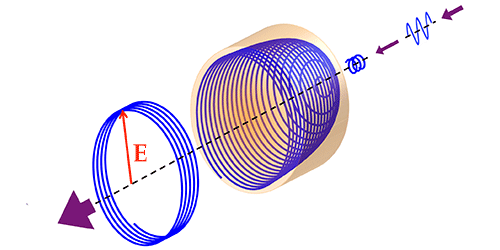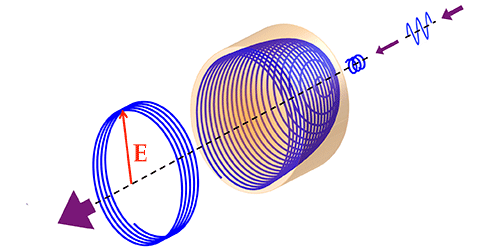A Circularly Polarized Laser for All Labs
Many biological molecules absorb right- and left-handed circularly polarized light differently depending on their structure, so polarized light sources can be used to probe the shapes of molecules. In particular, coherent “soft” x rays, which have wavelengths of up to a few tens of nanometers, are useful for imaging live cellular material. However, the majority of sources that can create such x rays with high photon yields, for example, synchrotrons, are found at large-scale facilities, which are both expensive and extremely competitive to access. Now, researchers have developed and tested a compact, circularly polarized soft x-ray laser that yields a large number of photons, yet is small enough to be used in a laboratory setting.
A team led by Stéphane Sebban at Paris-Saclay University, France, has used a circularly polarized beam to seed lasing in a plasma of krypton atoms and create coherent light with a wavelength of 32.8 nanometers. The researchers have demonstrated that this approach amplifies the number of photons in the seed beam by nearly a factor of 10,000, delivering more than 10 billion photons while keeping the radiation almost fully circularly polarized. The laser’s pulses can last a few picoseconds and each contains approximately ten billion photons. This high photon yield is suitable for photon-demanding applications such as imaging proteins and viruses. Sebban and his colleagues suggest that their compact architecture can furthermore be scaled to shorter wavelengths and shorter pulse durations. These enhancements would open up new applications such as imaging nanostructures and studying demagnetization in thin films used in the electronics industry.
This research is published in Physical Review Letters.
–Katherine Kornei





